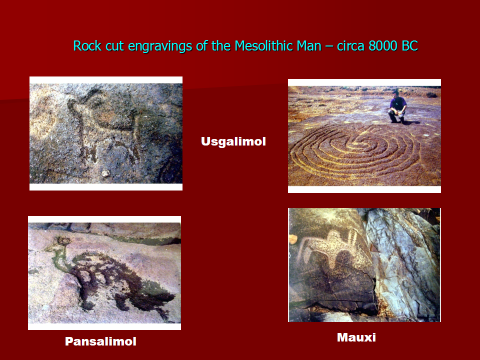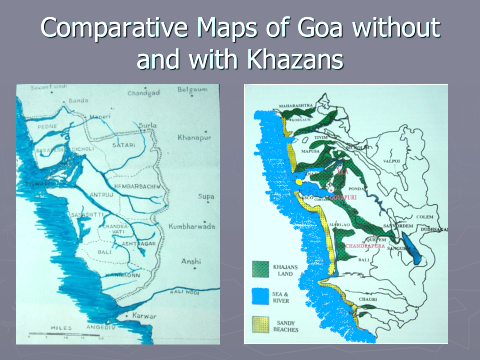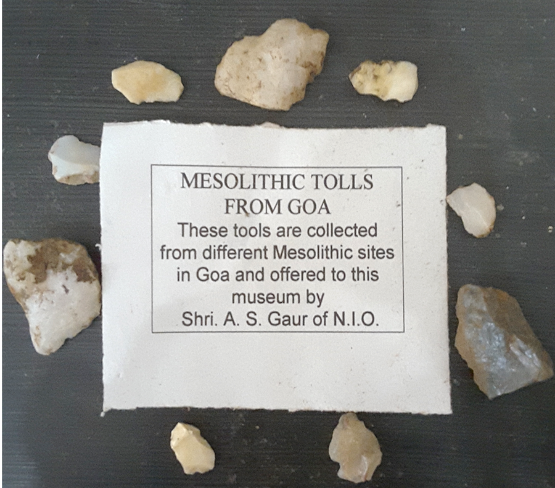According to scientists, man existed over 70 thousand years on earth. However writing was developed only about five to six thousand years ago and books began to be printed only about 600 years ago, with the invention of the printing press. But before this, what men did in this vast expanse of time is not recorded in books. This information has to be deciphered from scattered monuments and objects: sometimes buried deep in the soil as fossils, skeletons, burial ornaments, tools, carvings and sculptures; sometimes existing in the traditions, folk songs and other communicative devices such as rock engravings left by primitive man who could not write; or at times unearthed from the river beds, tanks, wells or from forests. As writing developed, we get documents in the form of parchments, i.e., written on barks of trees, on leaves and papyrus, on animal skins, or engraved on inscriptions, manuscripts, copper plate grants, seals, coins, paintings, furniture etc. In India, feats of great heroes were sculptured on stones called Viragals. Sometimes exaggerated stories may have been composed exalting the feats of rulers. So historians have to be very careful while deciphering these1.
Hence, our question is: when did the first men settle in Goa? Who were they? It is a utopian question to many Goans, and not even our educated adults may have an answer to it.
- Goa has Settlements of the Mesolithic era

Figure 2 – Rock engravings from East Goa
Fortunately, archaeologists have discovered, a few years back, over 250 rock engravings at
Usgalimol and Pansalimol in Sanguem Taluka, at Mauxi in Satari Taluka and at Kajur in Kepem Taluka. The oldest of these rock-engravings make one conjecture that primitive man settled in these parts of Goa about 10,000 years ago. These first settlers did not know to read and write or the use of metals. Hence with pieces of granite stone they engraved on laterite rocks images of fauna and flora and scenes of their day-to-day life. As they were hunter gatherers there are engravings of wild animals like elephants, foxes, peacocks, etc. They also domesticated animals such as the humped bull, dogs and fowls as seen in figure 2a. Hence, Goa’s history has to begin from the Mesolithic era.
The Museum at Pilar has some Mesolithic tools, offered by Dr A S. Gaur from the Marine Archaeology, NIO, Goa. One set is from Bim Betika in Madhya Pradesh and the other set is collected by him from different parts of Goa. (See figure 3)
Figure 3 – Mesolithic Tools from Bim Betika in Madhya Pradesh and from Goa displayed in the Museum in Pilar.
Mr Themistocles D’Silva, From Arossim, Cansaulim, working in USA, offered to the Pilar Museum a stone-hatched cum scraper which he happened to dig out from the area a little away from the Usgalimol rock-engravings we mentioned earlier. This hatchet-cum-scraper must have been used by the primitive men, who left the rock engravings, to hunt wild animals and cut the flesh for food. (Figure 4a)
(ii) Other Settlers
These above mentioned early settlers were followed around 4000 BC by the Kharwas or the fisher-folk and the toddy tappers.

Figure 4 (a) – The Fist hatchet cum scraper
The Kols, the Mundas, the Ouraons and others who constitute the Gavdas and Kulawadis (Kunbi tribes) of agriculturists, emerged around 3000 BC, probably from the Dravidian stock.They were nature worshippers. They worshipped specially the ant—hill (Roin in Konkani), which they considered the womb of the earth, because of the swarms of life that is generated in it in the form of ants. Later on, this developed in the worship of the goddess Santeri.
They brought with them the seeds of paddy (rice) and planted in this virgin land and the first yield was perhaps so heavy that it inclined on one side. A. R. S. Dhume says that the name “GOA” could have come from the word Goen-bab in the Mundari language, meaning inclined ear of corn2. In Sanskrit language, “GO” connotes cow – hence, a land abounding with cows, much needed for agriculture.
Sumerians: Gudea (2143 -2124 B.C.), the ruler of the city state Lagash of Sumer, in his records speaks of having carried on trade in gold, cedar, and copper with countries as distant as India and Egypt. Dr. Waddell says that it is admitted by Assyriologisrs that Gudea mentions in his records that he “personally visited and ransacked the material to build and adorn his temples …; that from the mountains of Megan, Gubbi and Dilman via the Persian Gulf and the Indian Ocean, he brought precious wood and diorite blocks by ships to the port of Lagash, for his statues and friezes”.3 Historians have identified all the places in the records of Gudea, except Gubbi, though they say that its location must be on the West Coast of India. Hence A. R. S. Dhume, identifies Gudea’s Gubbi as Goa, based on his above mentioned interpretation of the origin of the name4. Also, hard and dark speckled rocks, like the French diorite, and forests of precious teak wood abound on the hills of Goa and in the Sahyadri Ghats, even today. The Kshatriyas might have preceded this first group of Aryans, who are said to have come directly from Sumeria around 2000 BC.
Settlements: As society marched forward in its progress, new forces arose and new classes emerged. From the primitive tribal society, the people moved towards cultivation and settlements. They felt the need of protection against attacks of wild animals; the elephant being considered the strongest of animals, they revered it and took it as the lord protector of the village. This developed into the popular Hindu worship of Ganesh, the elephant deity.
Besides the above tribes, the bulk of the population of Goa is said to have descended from the Aryan stock, partly mixed with the Dravidians too.
Bene’ Israel: It is said that when around 721 BC, Assyrians annexed the Kingdom of Israel they exiled the inhabitants dispersing them all over their empire. Some Israelites unable to bear the hardships of the deportation embarked on a ship into the Arabian Sea and were shipwrecked on the rocks near Vengurla. They swam ashore and flourished in separate communities, known as “Bene’ Israel” [sons of Israel] in villages and towns, throughout the Konkan,5 including Goa, as in Siridao (Konkani Siddona, corresponding to Sidon, a port in Lebabon, on the borders of Israel)6.
Saraswats: 72 families of the Gaud Saraswat Brahmins are said to be the last of the Aryans, coming from Tirhot in ancient Gaud (between Bihar and Bengal) to settle in Goa around the 10th century AD preceded by the Kurade Brahmins. Before them, to a lesser extent, migrations of other people have also taken place as the Persians, the Arabs and lastly after them, the Portuguese from 15th century AD.
- The land of Goa rose from and was also reclaimed from the Sea
Govesami, the ship of the NIO (National Institute of Oceanography) discovered between 1978 and 1984 the formation of corals, scientifically calculated to have started forming about 11,000 years ago, at a distance of 100 kms west of Malpe in South Kanara; and later at Marmagoa and Malwan the same ship discovered living coral reliefs. Their conclusion was that the land of Goa, close to the Sahyadri range and the hills rose from the sea bed, up to 600 metres due to tectonic upheavals (earthquakes) in the Pleistocene age (about 11,000 to 12,000 years ago). It was on this land that the first primitive Mesolithic men, mentioned above, settled later on7. At that time, the Goan islands of Tiswaddi as well as Bardez and Salcete did not exist as in Goa today. They were a collection of hills and plateaux, amidst the sea and marshlands which penetrated close to the red soil at the foot of the highlands.
Goa has a unique unwritten history of man’s hard labour of almost 2,500 years, when its fertile rice-fields which are known as the KHAZANS, were slowly and constantly reclaimed from the sea by building bunds and sluice gates.

The sluice gates are known as MANOS (in the local Konkani language)8. They are like the Polders of Holland at the mouth of the River Zuiderzee; and like the dykes of Mesopotamia at the mouth of the Rivers Euphratis and Tigris in modern Iraq.

The Khazans were built in Goa by taking the soft mud (CHIKOL) from the sea or river bed itself, and not by dumping mud cut from the hills. The legend of Parshuram is a mythological interpretation of these efforts. It is to be noted that Goa’s coastline is just 100 kms long. But the cumulative length of the protective bunds throughout Goa is over 2,000 kms with hundreds of automatic sluice gates.9 The difference between the high tide and low tide water level is 9 feet. The Khazans start closest to the river bed 7 feet below the high tide level and 2 feet above the low tide level and go on rising till they meet the highlands.

Professor D.D. Kosambi argues that before these lands were recovered from the sea, the Khazans were dense, trackless, damp jungles, infested by snakes and tigers. The terrific south-west monsoon also brought a rapid growth of the forest which the hardy pioneers of agriculture in Goa that constitute today the Kulawadis or Kunbi tribes, braved for centuries. Kossambi opines that the marshes could not be cleared only by later settlers, the Aryans, without the labour supply of the former especially the Kunbis. The problem was solved in a remarkable fashion by sharing profits together between the Aryans to whom the land was given and the actual workers of the land, – the aboriginal tribes who tilled the land.10

This gave rise to 223 autonomous GANVKARI or GANVPONN, (which are today known as the village (COMMUNIDADES) with their VANGODD (elders/ descendants of the original settlers of the village) of different castes deliberating their affairs in community11.
In this system, both the lands were cultivated and the fruits were shared in common by the entire village. When writing history text books for the schools, these unique achievements of Goa are to be given proper place.
The hillock of Pilar rises alongside one of the largest reclaimed Khazan lands of Goa. Obviously, this has been a place inhabited from the very ancient times. One of the clear indications of the same are the stone-age tools, as fist hatchets, scrapers, grinders, stone hammer, agricultural implements, and other such artefacts that have been found at a depth of over 18 feet and are exposed in the Pilar Museum.
1 Teesta Setalvad, Doctoring Young Minds: A Play with Fire, Indian Currents, Vol XII No 8, p 10, Indian Current Publications 375-A, Pocket II, Mayur Vihar Phase 1, Delhi. 110 091.
2 Ibidem
3 Dr. L. A. Waddell, The Makers of Civilization, 1929, reprinted by S. Chand & Co., New Delhi, 1968.
4 A. R. S. Dhume, op cit. pp 118 & 306.
5Vivek Menezes, ‘Israel’s long standing Goa connections,’ The Times of India, Goa edition, dt. 4-7-2017 p. 3
6C. J. Costa (this author), Apostolic Christianity in Goa and the West Coast, Xaverian Publications Society, Pilar, Goa, 2009, p.49
Anant R.S. Dhume, The.Cultural History of Goa (10,000 BC -1342 AD), Mapp Printers, Panjim, Goa, 1985, pp 9-23
8 Gerald A. Pereira, An outline History of Goa, Diario de Noite Press, 1973 , pp7, 12-13.
9 . C. J. Costa (this author), GOA AND HER KHAJANS, Boletim of Institute Menezes Braganza, 1997, No.177, p 57-73
10 D D Kossambi, An Introduction to the study of Indian History, Popular Prakashan, Bombay 1975, p 304
11 Adv. Andre A. Pereira, Introduced Land Laws at a glance, Chap. I, New Age Society, Maina, Socorro,,Goa,
403501.


